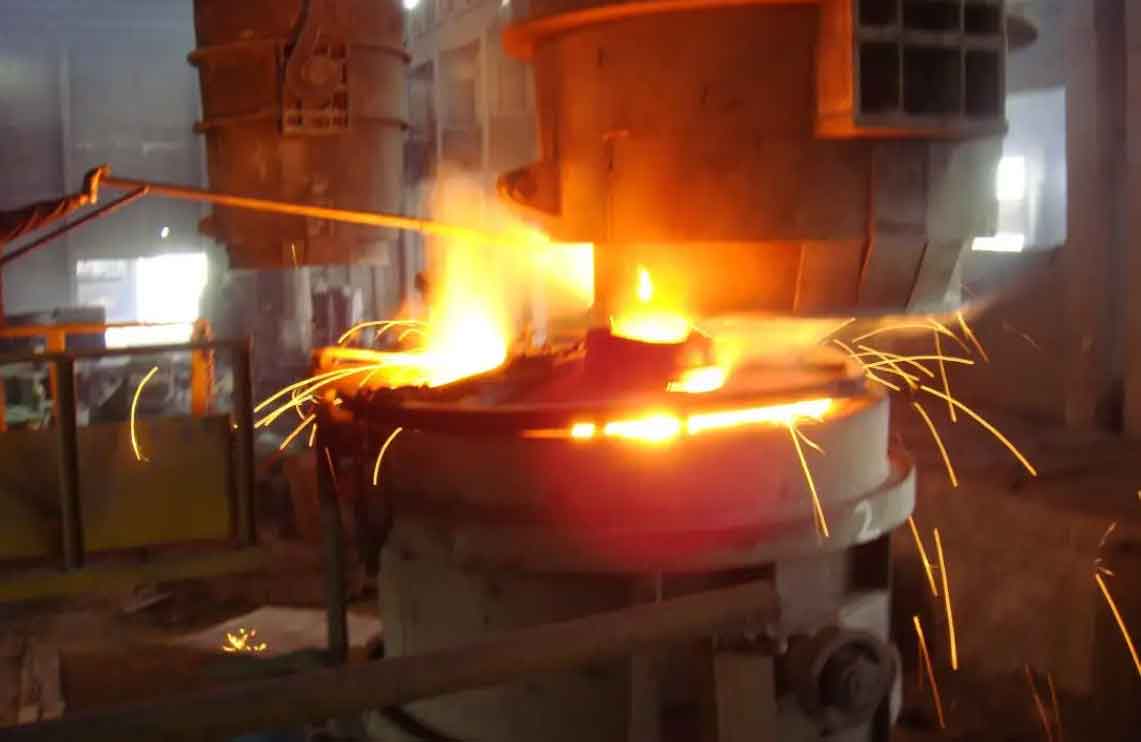
The name of furan resin sand comes from furan no bake process in English. Furan resin sand casting is a molding method in which furan resin is used as binder and catalyst is added to mix molding sand. The sand mold can solidify itself at room temperature without baking or hardening gas. The main raw materials are silica sand, furan resin and curing agent. Adhesive furan resin is a polycondensation resin with furan ring as the main component and low degree of polymerization. According to its chemical composition, it can be divided into phenolic modified furan resin, urea formaldehyde modified furan resin and phenolic urea formaldehyde modified furan resin. Urea formaldehyde modified furan resin is the most widely used in China.
The commonly used curing agent of furan resin sand in China is organic sulfonic acid, which can be divided into p-toluene sulfonic acid and xylene sulfonic acid. P-toluene sulfonic acid is more suitable for autumn and summer, and xylene sulfonic acid is suitable for winter with low temperature. Furan resin contains “furan ring”, so its strength is increased. It also contains hydroxyl, hydroxymethyl and hydrogen bonds with strong activity. It exists in short chain linear structure and its molecular weight is small. Under the action of catalyst, the chain compounds undergo dehydration reaction and cross-linked into three-dimensional macromolecular organic compounds. After the raw sand, catalyst and resin are stirred by the sand mixer, each grain of sand seems to be embedded or contained in this large molecular weight organism. The speed of sand and sand is bonded by the resin bridge, so as to form the structural strength required in the production process. Furan resin sand is characterized by high strength at room temperature, good collapsibility, good fluidity, high molding efficiency, no drying of mold and sand core, improved production efficiency and site utilization, shortened production cycle, smooth surface of sand mold castings, high and stable dimensional accuracy and many other advantages.
Furan resin sand process has a wide range of applications. It can be used not only in single piece, small batch and multi variety production enterprises, but also in single variety and large batch production enterprises. Furan resin sand is increasingly widely used in furan resin sand casting production in China. Nearly 1000 enterprises use furan resin sand process to produce furan resin sand castings. Furan resin sand molding is a very good process for iron castings, but for steel castings, especially steel castings with complex thin wall and large difference in wall thickness, in addition to the above advantages, the resin sand molding process also has some problems that are difficult to solve. During the solidification process, the shrinkage of steel castings is much larger than that of cast iron. When entering the high-temperature area after pouring, furan resin sand forms a hard carbonized skeleton, Due to the good thermal insulation performance of resin sand and large thermal expansion, it leads to poor concession. When the liquid steel is cooled near the solidus line, stress is generated due to shrinkage. When the stress is greater than the tensile strength of metal dendrite skeleton, cracks are formed. At the same time, the anti metal penetration ability of resin sand is poor, and it is easy to produce veins and sand sticking. The defect occurrence rate of furan resin sand castings is higher than 20%, even up to 60%. The main defects are cracks, burrs, sand sticking Carburization, sulfurization, etc. At present, when various enterprises use furan resin sand process to produce steel castings with complex thin wall and large difference in wall thickness (bolster, side frame and motor shell), the most prominent quality problem is hot crack.
